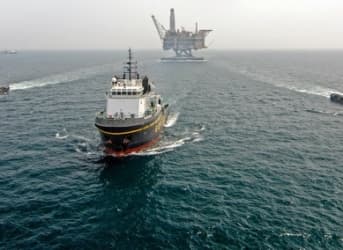Italian oil group ENI is expected to begin production from the Goliat Field off Norway in a few short weeks. The project, which has cost $5.6 billion, is expected to produce 34 million barrels of oil per year by the second year of production.
Yet ENI seems to be bucking the global trend, as would-be Arctic drillers in other parts of the region hand back leases or allow them to expire, citing high risks and high costs as major contributing factors. Successful environmental campaigns as well as an increased global awareness – and political will – to address climate change have also been influential.
All this against a backdrop of global oil prices below $50 a barrel and an outlook of continued oil market volatility.
With Arctic exploration and production being so expensive, the risks so great, and the current market conditions relatively unfavorable, one might ask why Shell, ENI, and others would continue. Related: Low Oil Prices: Assessing The Damage So Far In 2015
The main reason is resource potential. The Arctic holds the last, great, untapped oil and gas reserves. The U.S. Geological Survey in 2008 estimated that the Arctic contains 22 percent of the world’s undiscovered hydrocarbon resources, totaling 90 billion barrels of oil, 1,670 trillion cubic feet of natural gas, and 44 billion barrels of natural gas liquids.

But those resrources come at a significant cost. One estimate put project costs in the Alaskan Arctic at 50 – 100 percent greater than an equivalent project in Texas.
Shell has discovered this first hand. The company has sunk $6 billion into its arctic ambitions, and experienced several high-profile setbacks, including the abandonment of its drilling campaign in the Beaufort Sea after its oil rig ran aground in 2012. Related: Oil Price Collapse Triggers Currency Crisis In Emerging Markets
For many opponents, the environmental cost is simply too high. Environmentalists such as Greenpeace and the National Resource Defense Council, among others, argue that there is no safe way to develop the Arctic region’s oil and gas potential.
U.S. Democratic presidential hopefuls agree. Hillary Clinton, Martin O’Malley and independent Bernie Sanders have all opposed drilling in the Arctic. Of course, campaign promises are an imperfect indicator of policy action in office. But companies would be wise to take note.
Moreover, with momentum building for this year’s COP 21 climate talks in Paris – and a genuine possibility of reaching global accord on climate action – there are many arguments to support a cutback of such high-risk hydrocarbons exploration.
In a letter in Nature magazine last January, scientists demonstrated that development of oil and gas resources in the Arctic would be “incommensurate” with efforts to limit average global warming to 2C.
Low oil prices and, perhaps more importantly, oil market volatility, is another major factor. Even the great arctic oil explorer Statoil has begun to feel the pinch. Norway’s national oil company has announced it will not be drilling any wells in the far northern Barents Sea this year. The company led the world’s most active arctic exploration campaign in 2014. Related: This JV Could Trigger A Shale Boom In An Unexpected Venue
At one time ENI held 89 offshore leases in the Beaufort and Chukchi Seas but has allowed many to expire without drilling.
In Greenland, several companies, including Statoil and Engie (formerly GDF Suez) have handed back their licenses. High costs, lack of infrastructure, and climate have made the area particularly difficult for drilling. That British company Cairn Energy had no commercial success after a two-year campaign no doubt influenced others’ decision making.
Meanwhile, back in Norway, Arctic drilling has its own critics. Though not on the scale of Greenpeace’s “kayaktivists”, both Christian Democrats and the Liberal Party have opposed the government’s efforts to redefine the ice edge – which has been gradually receding – and allow companies to develop previously unexplored areas of the Arctic.
ADVERTISEMENT
Norway is optimistic that companies taking a long term view on oil prices and supply outlook will still be interested in its latest bidding round, which offers acreage in the Barents Sea.
In the meantime, Shell is not expected to begin commercial production until 2030, and any new contracts awarded under Norway’s bid round would likely have a similarly long horizon. Much could change by then.
By Alexis Arthur Of Oilprice.com
More Top Reads From Oilprice.com:
- OPEC’s $900 Billion Mistake
- China’s Stock Market Meltdown Dragging Global Markets With It
- Why Water Is More Important To Iran’s Future Than Oil
















